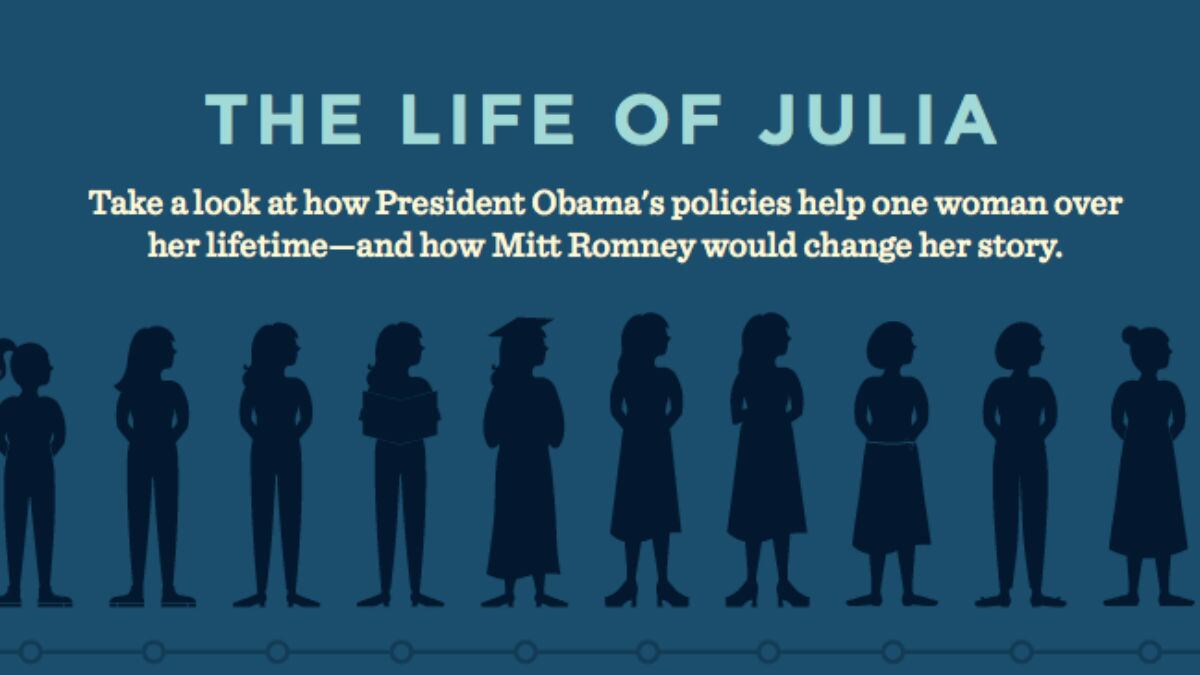
There is a lot of conservative mockery over "The Life of Julia", an Obama campaign slideshow about a fictional woman, "Julia", who goes through life and at different points benefits from some sort of Obama administration initiative.
I think conservatives are having a little too much fun mocking the slideshow that they don't actually see how the advertisement is supposed to work. If I can put on my "Mad Men" hat for a second…
Here is what one conservative columnist, David Harsanyi, wrote about "Julia":
Who the hell is "Julia," and why am I paying for her whole life?
In the new Barack Obama campaign piece The Life of Julia, voters can "Take a look at how President Obama's policies help one woman over her lifetime -- and how Mitt Romney would change her story." It is one of the most brazenly statist pieces of campaign literature I can ever remember seeing.
Let's, for the purposes of this post, set aside the misleading generalizations regarding policy in the ad (no one is innocent on that account, obviously). What we are left with is a celebration of a how a woman can live her entire life by leaning on government intervention, dependency and other people's money rather than her own initiative or hard work. It is, I'd say, implicitly un-American, in the sense that it celebrates a mindset we have -- outwardly, at least -- shunned.
I think Charles C. W. Cooke makes a similar error in reading the slideshow:
The “Julia” chart shows how much better off a fictional American would be under Barack Obama than Mitt Romney as she goes through her life, although, given that Julia lives for at least 67 years, one presumes Obama will not be president for most of it. (And not even Mitt Romney can run for a third time.)
"Julia" is not just one person who is going through life dependent on government. I think one of the tricks of the "Julia" timeline is that it allows for the person reading the slideshow to identify other women they know within the timeline.
If you are an adult, then the timeline has some things that speak to you. If you are a mother with a daughter in college, then it speaks to concerns you may have for you and your daughter. Same if you have a grandmother and you have concerns about her.
A person viewing the timeline not only sees their own future, but also the different situations for other people they currently know.
It's not just a timeline for one person, it is meant to be a snapshot of the entire current female population.
There are the jokes to be made about Obama and his "composite girlfriends", but what if Obama wins a greater percentage of the women's vote in November? Are we really going to say he did that in spite of the campaign advertising? Or is it worth trying to understand how the advertising was supposed to work?






